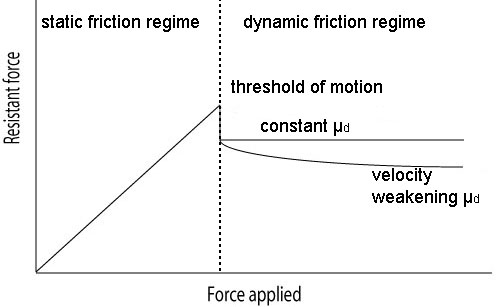Dry Friction
In general dry friction describes the reaction between two solid bodies in contact with each other when they are in motion (kinetic friction) and when they are not (static friction). Both static and kinetic friction are proportional to the normal force exerted between the two solid bodies. For instance, the normal force between the ground and an object is the force of gravity of that object when the ground is level. In all cases friction works against the motion or inclination towards motion. When you push a box on the ground it does not move at first because the force you apply is not strong enough to overcome the force of friction. Mathematically this is because the net force is zero or the force applied "Fa" is equal to the friction force. When the box starts to move the force of friction becomes kinetic friction and can either be constant with any velocity or can change with velocity. In most elementary physics classes the kinetic friction is taken to be constant and is written as the product of the normald force and a coefficient of friction "μkN=Ffriction".

The interaction of different substances is modeled with different coefficients of friction. This means that certain substances have higher resistance to movement than other for the same normal force between them. These coefficients are listed in many places and are very dependent on the state of the material like how smooth it is. Each value is experimentally determined.